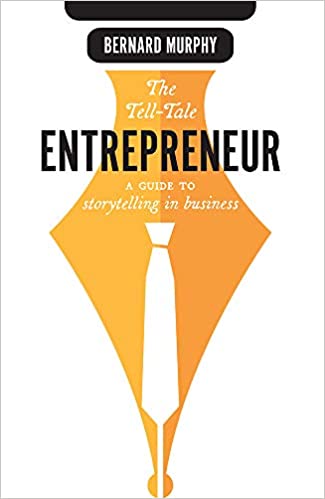Over the last 40 years, Bernard has worked with semiconductor and EDA companies in hands-on, management and consulting roles in engineering, sales and marketing. He most recently co-founded Atrenta where he created and led the development of SpyGlass, retiring as CTO when Atrenta was acquired by Synopsys. Post-retirement, he’s been an active blogger for SemiWiki. He’s also written a couple of books under the SemiWiki label and he independently advises a number of clients on marketing content
Why did you decide to write The Tell-Tale Entrepreneur?
Over the last 40 years, I’ve created, suffered and edited more than my fair share of biz and tech communication. Which has reinforced my view, widely shared, that our communication is pretty bad. Pitches, blogs, white papers aiming to convince are at best unconvincing, at worst painful. What’s curious is that, from engineers to CEOs, think we’re good at PowerPoint. Yet we’re terrified at the thought of writing. PowerPoint feels like a familiar template, communicate-by-numbers. Word has no template; we have to start from a blank sheet, hence the terror. Which suggests the format is beside the point, we suck at communication either way. PowerPoint just lulls us thinking we don’t.
I started out just as bad, but I worked hard to improve. Through a lot of trial and error I believe I figured out the problem. I want to pass this on, not through a boring how-to book but through an entertaining set of short stories. Designed to show you how to make your communication just as engaging.
How is storytelling different and why is it better than other ways to communicate?
Take PowerPoint as a reference. It’s well established and has great value in structured contexts where efficient information transfer is the goal. Status updates, project planning, training, technical due diligence. But it’s weak in persuasion. Where you need to convince a client, prospect, investor that you have the best product for their needs. Or you are their best possible partner. Or you failed to deliver what you promised and now must rescue the relationship.
These are times when slides are the wrong answer. You have to connect emotionally with your audience – building excitement around a new direction, dealing with fear of possible failure, maybe pointing out pitfalls that you already understand well. Or convincing them there will be no more mistakes. Eyeball to eyeball conversations.
The best way to guide that conversation is through a story. You’re looking at them (not slides), they’re looking at you, and you’re telling them a story, appealing to their emotions.
Storytelling isn’t a new idea. What makes your approach different?
Storytelling is a very old idea. Today we relegate stories to entertainment, expecting that business communication needs a more professional approach. Our brains don’t agree. We’ve been telling stories from beginning of time. Not just to entertain but also to pass on wisdom, culture, beliefs, laws. Our brains are wired to receive stories efficiently, motivating us to action. Not so for data and logic dumps. That’s why we find PowerPoints so boring and start scrolling through texts, emails, anything rather than listen to the speaker.
Instead tell a story. Stories are naturally engaging, especially when they sound roughly relevant to the audience’s goals. We want to know what’s going to happen next. Calling the hero to adventure. Facing tests together, proving ourselves a worthy mentor. The big challenge where it could all go wrong, but somehow our hero makes it through, now stronger, more capable. And the final challenge. Much more interesting than texts and emails. They learn what you can do for them along the way, in a context they recognize.
Storytelling is big in marketing now. Tons of advice online on how to do it – blogs, whitepapers, companies who want to advise you (for a fee). But there’s something a bit odd about this advice. It all seems to come in the same business communication standard format: explanations, bullet lists and charts. You want to learn how to tell stories. Wouldn’t it be better to do that by reading stories?
That’s my innovation – I explain how to tell stories by telling you stories.
Who do you think will find value in this book?
Anyone in tech who must communicate with customers, prospects, investors. Who wants to reach markets through blogs and white papers. Those who aspire to sell their company. All will relate to experiences in these stories. And will I hope will be inspired to re-imagine and improve their own stories, based on these examples.
The book is also written for a general audience. Anyone interested in real stories drawn from different phases in the lives of tech ventures. Technology plays a role in these stories but isn’t primary, so I’ve simplified quite a lot. People, opportunities, challenges, growth are the most important elements.
These stories are for everyone, but especially for us communicators in tech. Most important, I hope you will begin to understand why our audiences are thirsting for stories, not more death-by-PowerPoint.
Where can we find the book?
The Tell-Tale Entrepreneur is available for pre-order on Amazon and will be released on January 26th, 2021.
Share this post via:






The Quantum Threat: Why Industrial Control Systems Must Be Ready and How PQShield Is Leading the Defense